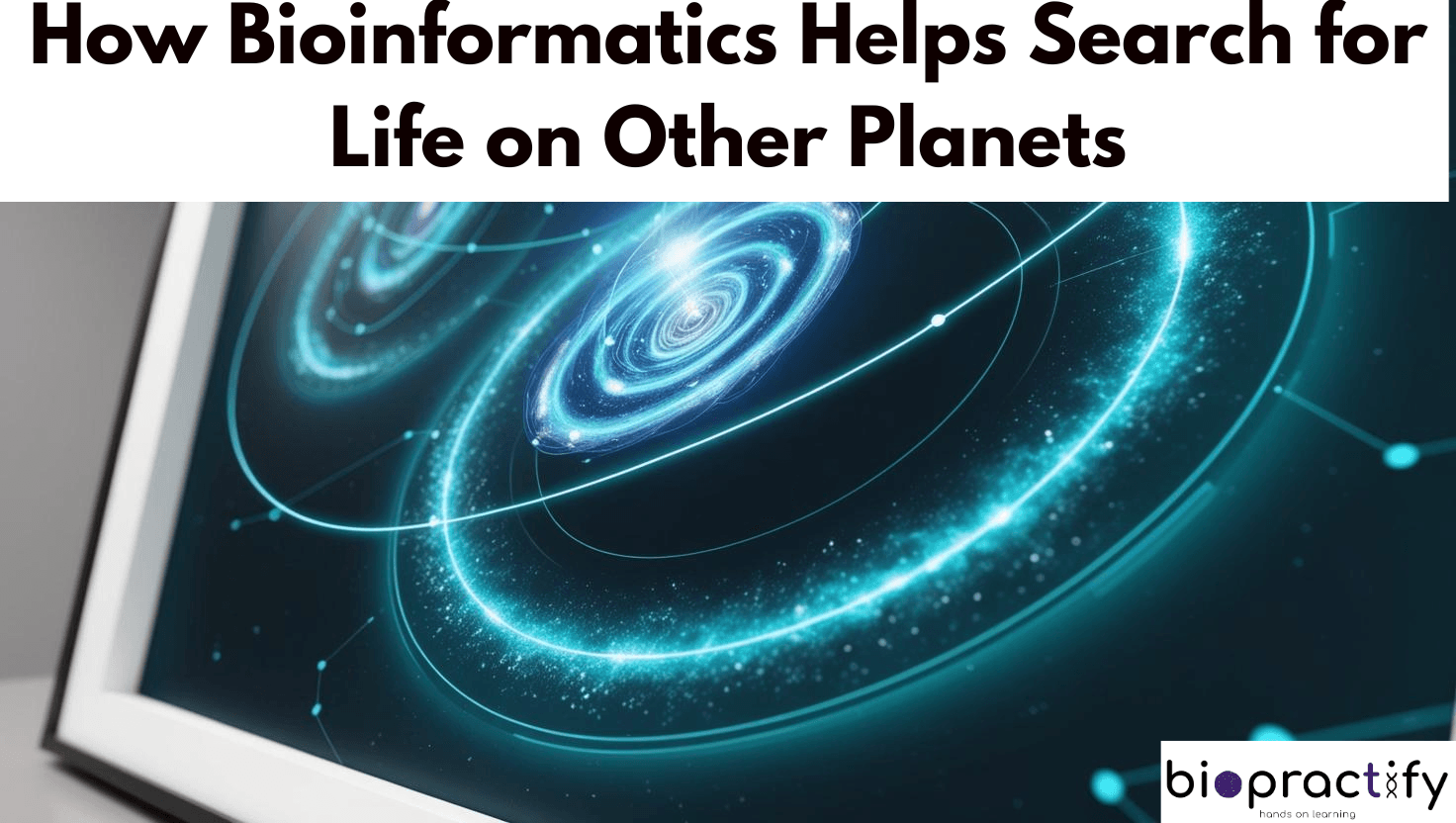Introduction: Can Bioinformatics Help Find Life Beyond Earth?
Scientists have been searching for life on other planets for decades. But how can they analyze data from space? This is where bioinformatics helps search for life on other planets. Bioinformatics is a powerful tool that helps scientists study biological data, including DNA and proteins. When combined with space exploration, it can help detect signs of life beyond Earth. In this blog, we will explore how bioinformatics plays a key role in this exciting search.

What is Bioinformatics and Why is it Important in Space Research?
Bioinformatics is the use of computers and software to analyze biological information. It helps scientists understand DNA, proteins, and other molecules that make up life. On Earth, it is used in medicine and genetics, but now, bioinformatics in space exploration is becoming an important field.
Scientists use bioinformatics to study extreme environments on Earth, like deep-sea vents or icy lakes in Antarctica. These places are similar to conditions on Mars or Europa, one of Jupiter’s moons. If life exists in such extreme conditions here, it could exist on other planets too.
How Bioinformatics Helps in the Search for Alien Life
1. Analyzing Microbial Life in Extreme Environments
Before searching for life in space, scientists first study life in the most extreme places on Earth. Bioinformatics tools for space research help in identifying unique DNA sequences in bacteria and microbes living in extreme heat, cold, or pressure. These findings guide scientists in knowing what to look for on other planets.
2. Detecting Alien DNA or Alternative Genetic Codes
DNA is the blueprint of life on Earth. But what if life on other planets does not use the same genetic code? Using bioinformatics for alien life detection, scientists can compare known DNA structures with possible alternative genetic codes. If unusual patterns are found in space samples, they could hint at extraterrestrial life.
3. Analyzing Data from Mars and Other Planets
Rovers like Perseverance on Mars collect soil and rock samples. These are tested for organic molecules, which are building blocks of life. Bioinformatics for Mars exploration helps analyze this data to detect biological signatures, like amino acids or microbial DNA, that could indicate past or present life.
4. Studying Meteorites for Biological Traces
Scientists also examine meteorites that land on Earth. Some of these space rocks contain organic molecules. Bioinformatics in astrobiology research helps in studying these molecules to see if they match known biological patterns or if they suggest a different form of life.
The Role of AI and Machine Learning in Bioinformatics for Space
AI (Artificial Intelligence) and machine learning are making bioinformatics even more powerful. AI in bioinformatics for extraterrestrial life helps process huge amounts of data quickly. It can identify patterns in DNA sequences, detect unusual molecules, and predict the possibility of life based on existing biological models.
Challenges in Using Bioinformatics for Space Exploration
Even though bioinformatics is a powerful tool, there are challenges:
- Limited Space Samples: It is hard to get samples from other planets, and contamination is always a risk.
- Unknown Life Forms: If alien life does not use DNA, current bioinformatics tools may not detect it.
- Data Storage and Processing: Space missions collect massive amounts of data, and analyzing them takes time and advanced computing.
Future of Bioinformatics in the Search for Extraterrestrial Life
As technology improves, bioinformatics will play an even bigger role in space exploration. Scientists are working on new ways to detect unknown genetic structures. Future space missions, like those to Europa or Enceladus (Saturn’s moon), will use bioinformatics tools to analyze water samples beneath their icy surfaces.
Conclusion: Bioinformatics is Key to Finding Life Beyond Earth
The search for life on other planets is one of the most exciting scientific missions. How bioinformatics helps search for life on other planets is a fascinating field that combines biology, space exploration, and advanced computing. With new discoveries happening every year, we may soon find evidence of life beyond Earth!
- Learn about CRISPR gene editing and its potential.
- Read more on DIY Biology and its global impact.
- Explore other biotech innovations on our blog here.


Leave a Reply